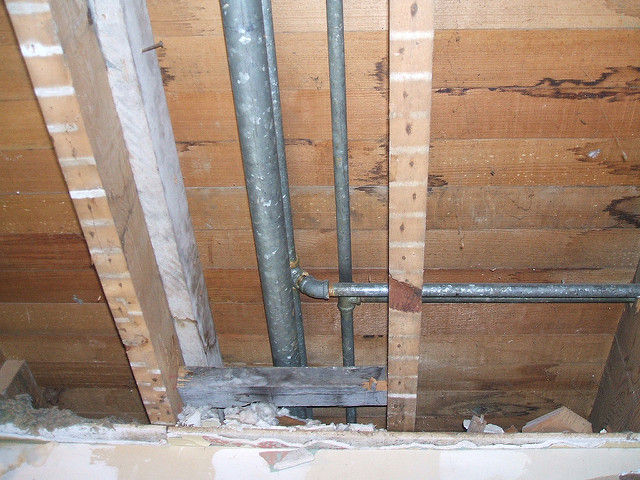6 Ways to Find Concealed Water Leakages in Your Residence
6 Ways to Find Concealed Water Leakages in Your Residence
Blog Article
Just about every person has their personal idea when it comes to Hacks to detect leaks.
.jpg)
Early detection of dripping water lines can minimize a potential catastrophe. In addition to saving you cash, it will certainly decrease the irritation and stress. The moment you locate a leakage, calling your plumber for repair work is the most effective remedy. Nevertheless, some little water leaks might not be visible. Here are some hacks that aid if you can not spot it with your nude eyes.
1. Examine the Water Meter
Examining it is a guaranteed means that helps you discover leaks. If it relocates, that indicates a fast-moving leakage. This indicates you may have a slow-moving leakage that can also be below ground.
2. Inspect Water Usage
If you spot unexpected adjustments, despite your usage being the very same, it suggests that you have leaks in your plumbing system. An unexpected spike in your bill indicates a fast-moving leak.
Meanwhile, a stable rise on a monthly basis, even with the very same behaviors, reveals you have a slow-moving leak that's also slowly intensifying. Call a plumber to extensively examine your residential or commercial property, especially if you feel a warm area on your floor with piping beneath.
3. Do a Food Coloring Test
When it concerns water usage, 30% originates from toilets. Test to see if they are running appropriately. Drop flecks of food color in the storage tank and wait 10 minutes. There's a leakage in between the container and also dish if the shade somehow infiltrates your bowl during that time without flushing.
4. Asses Exterior Lines
Do not fail to remember to inspect your outside water lines as well. Needs to water leak out of the connection, you have a loose rubber gasket. One small leak can throw away lots of water as well as increase your water costs.
5. Evaluate the circumstance and check
Homeowners must make it a routine to inspect under the sink counters and also inside cabinets for any kind of bad odor or mold and mildew development. These two warnings suggest a leak so punctual attention is needed. Doing routine evaluations, also bi-annually, can save you from a major trouble.
If you know your home is already old, keep a careful eye on your heating units, hose pipes, pipelines etc. Look for stainings as well as damaging as the majority of home appliances as well as pipes have a life expectancy. They will also naturally degrade as a result of tear and also use. If you suspect dripping water lines in your plumbing system, don't wait on it to rise. Call an expert plumber immediately so you do not end up with a horrible mess in your house.
Early detection of leaking water lines can reduce a possible disaster. Some small water leakages may not be visible. Examining it is a proven way that helps you find leaks. One tiny leakage can throw away tons of water as well as surge your water costs.
If you believe leaking water lines in your plumbing system, don't wait for it to intensify.
WARNING SIGNS OF WATER LEAKAGE BEHIND THE WALL
PERSISTENT MUSTY ODORS
As water slowly drips from a leaky pipe inside the wall, flooring and sheetrock stay damp and develop an odor similar to wet cardboard. It generates a musty smell that can help you find hidden leaks.
MOLD IN UNUSUAL AREAS
Mold usually grows in wet areas like kitchens, baths and laundry rooms. If you spot the stuff on walls or baseboards in other rooms of the house, it’s a good indicator of undetected water leaks.
STAINS THAT GROW
When mold thrives around a leaky pipe, it sometimes takes hold on the inside surface of the affected wall. A growing stain on otherwise clean sheetrock is often your sign of a hidden plumbing problem.
PEELING OR BUBBLING WALLPAPER / PAINT
This clue is easy to miss in rooms that don’t get much use. When you see wallpaper separating along seams or paint bubbling or flaking off the wall, blame sheetrock that stays wet because of an undetected leak.
BUCKLED CEILINGS AND STAINED FLOORS
If ceilings or floors in bathrooms, kitchens or laundry areas develop structural problems, don’t rule out constant damp inside the walls. Wet sheetrock can affect adjacent framing, flooring and ceilings.
https://www.servicemasterbyzaba.com/blog/how-to-detect-water-leakage-in-walls/

We had been made aware of that article about Detecting hidden plumbing leaks through a good friend on our other web page. Do you know about someone else who is in the market for the topic? Be sure promote it. Thanks so much for taking the time to read it.
Report this page